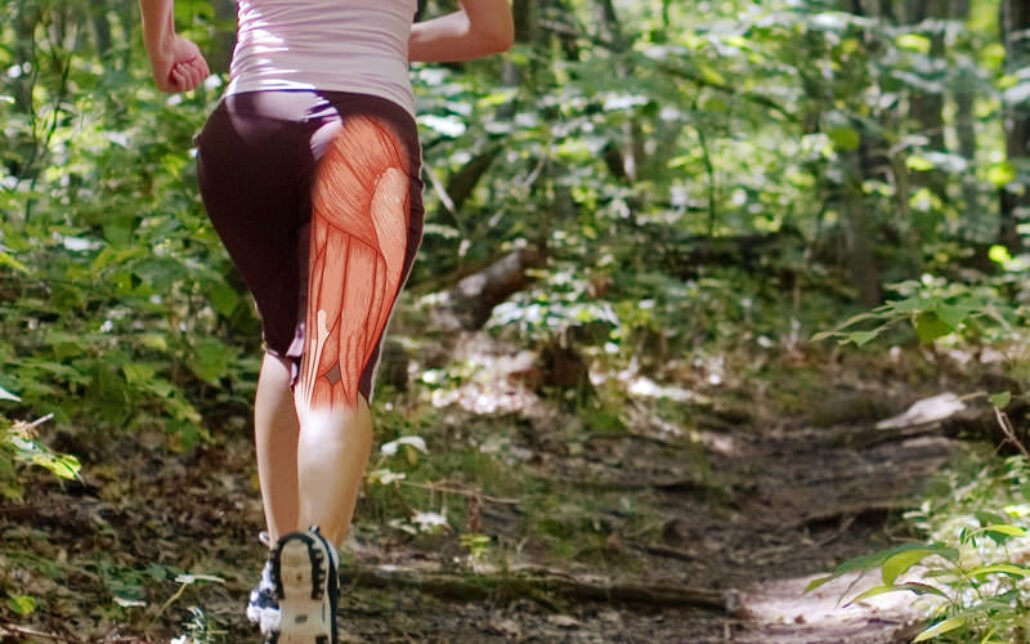We use our hamstring muscles every day. Hamstring injuries are common, especially among athletes involved in “sprinting” sports like basketball, soccer, and track. We explain what the hamstring is and how this muscle group keeps you in full stride.
Every swing of our leg as we walk, sprint, or run is controlled by our hamstring: the group of muscles and tendons that run along the back of the thigh. Anyone can pull a hamstring, but some sports and activities make you particularly susceptible to hamstring injuries. Understanding how this muscle group works is the first step in preventing hamstring injury.
Our hamstring runs down the back of the thigh from our pelvis to our knee. It is anchored to the pelvic bone at the top of the thigh, and at the lower leg bones just below the knee. Comprising muscle and tendon tissues, it functions to decelerate the swing of our leg at each step we take, support the leg when we extend it straight back behind us, and help us bend our knee. There are three muscles in our hamstring:
- Semitendinosus
- Semimembranosus
- Biceps femoris
At the top of the thigh, the hamstring muscles are attached to the ischial tuberosity of the pelvic bone (also called the sitz bone). At the knee, these muscles cross the joint and attach at the top of the tibia and fibula in the lower leg. At both locations where hamstring muscle anchors to bone, the muscle fibers are reinforced by tough connective tendons.
“One of the reasons our hamstring muscles are more prone to injury is because they are one of the muscle groups to cross and support 2 joints—not just one,” explains Summit Orthopedics sports medicine surgeon Dr. James Gannon. “Muscles that cross only one joint are less vulnerable. Researchers postulate that this is because muscles crossing two joints have higher levels of elongation and contraction, increasing injury risks.”
The hamstring’s job is to check the leg as it swings forward. It is under the most stress at the conclusion of each stride, especially during sprinting when strides are rapid and powerful. Hamstring muscles can be strained or damaged when they don’t have the strength to withstand these moments of high stress.
Hamstring injuries can occur in three places along the muscles:
- A proximal injury occurs at the point where the muscles attach to the pelvis at the top of the leg. The most severe hamstring injuries are located at this point, and occur when the hamstring tears partially or completely away from the pelvic bone. Surgery may be needed to repair tears or muscle separation from the bone. Fortunately, these injuries are rare.
- Mid-muscle injury occurs in the thick central part of the muscle group. This is the most common of hamstring injury types. These muscle injuries usually can be treated nonsurgically—but often require a great deal of patience. The recovery period can be lengthy.
- Distal injuries are located at the point where the lower tendons attach to the shinbone.
Active warm-ups and exercises designed to strengthen and stretch hamstring muscles are the best way to protect your hamstrings from injury. You’ll find hamstring stretches demonstrated by Summit physical therapists here: https://www.summitortho.com/phase-seated-hamstring-stretch/
Summit Orthopedics offers comprehensive sports medicine expertise
From Olympians to pro athletes to kids in youth sports and those that just want to be more active—Summit Orthopedics delivers expert care by fellowship-trained sports medicine physicians. If you are recently injured or concerned about ongoing pain, Summit Orthopedics sports medicine specialists have the expertise to evaluate your discomfort and develop a plan to quickly and safely help you get back to being active.
Start your journey to stronger, healthier athletic condition. Find your sports medicine expert, request an appointment online, or call us at (651) 968–5201 to schedule a sports medicine consultation.
Summit has convenient locations across the Minneapolis-St. Paul metro area, serving Minnesota and western Wisconsin. We have state-of-the-art centers for comprehensive orthopedic care in Eagan, MN, Vadnais Heights, MN, Plymouth, MN, and Woodbury, MN, as well as several additional community clinics.

